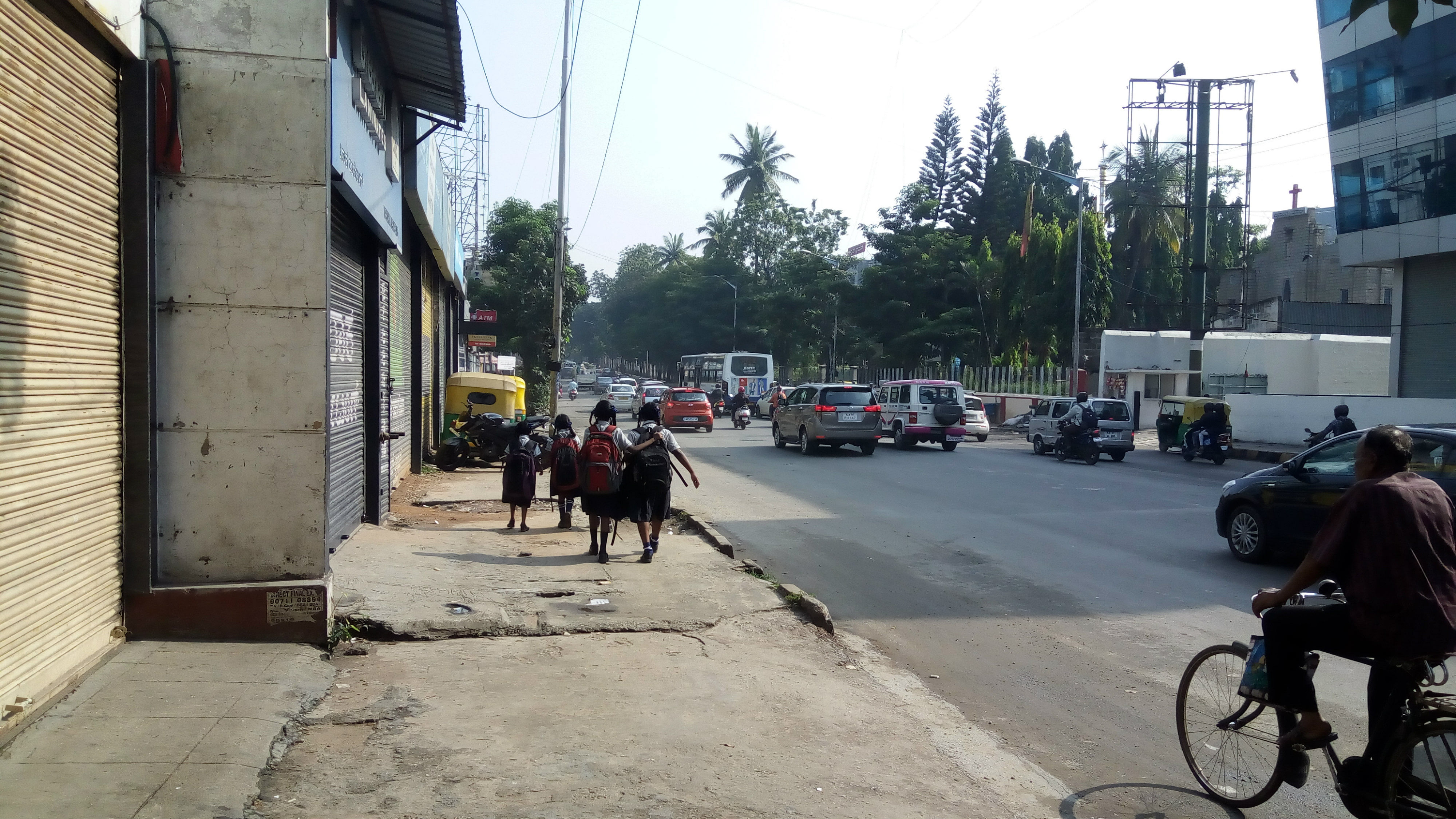
By Angarika Gogoi
Research reports indicate Bengaluru's increasingly toxic air is making city dwellers, particularly children, susceptible to respiratory diseases.
A study published in International Journal of Contemporary Pediatrics in March 2018 concluded that exposure to smoke is among the top three reasons that trigger asthma in children. The conclusion was arrived at after observing 100 children in the Intensive Care Unit of Indira Gandhi Institute of Child Health, Bangalore, in 2015.
Another research article published in the same journal in November 2018 concluded that air pollution from traffic and combustion of fuels and biomass fuels are some of the major triggers of bronchial asthma.
Bengaluru-based paediatric pulmonologist Dr H Paramesh confirmed that these factors do contribute to respiratory issues. He pointed out two of the biggest culprits: PM2.5 (suspended particulate matter whose diametre spans less than 2.5 micrometre or about 3% the width of a human hair) and PM10. He explained that when these pollutants are inhaled and enter the bloodstream, they reduce the body's ability to absorb oxygen.
Dr Pratima Singh, a research scientist at Centre for Study of Science, Technology and Policy, said PM2.5 and PM10 get inhaled easily due to their microscopic size. She said these particles reach deep into the lungs and can cause serious health issues.
She noted that children are particularly prone to the symptoms of asthma and have a greater chance of developing the disease as their lungs are not fully developed and they have a faster breathing rate. She added that children living in highly polluted areas experience a deterioration in their lung function over the years as they grow up.
Affecting the unborn
Dr Paramesh revealed that living in a polluted locality affects not only children but also the unborn. “Even when a child is in the mother's womb, there might arise complications as the foetus receives less oxygen. This happens because the placenta, which provides the nutrition and oxygen for the foetus, gets clotted because of the oxygen-stress in the mother's body,” he explained.
He said about 30% of pregnant women who have been exposed to high levels of pollution deliver prematurely. Further, he informed that these children grow up needing constant observation and medication and also develop constant wheezing.
Dr Paramesh said the number of children who come to him with complaints of asthma has significantly increased over the years. His research paper published in journal Current Science in 2018 throws light on the manifold growth in prevalence of paediatric asthma in Bangalore.
The study estimates that while about 9% minors in the city had asthma in 1979, the number grew to 25.5% in 2009. Also, the prevalence of persistent asthma (a severe form of the disease) increased from 20% in 1994 to 72.5% in 2009.
Other research reports back these findings. According to one, Bangalore doctors specialising in respiratory issues had 80% more patients in 2016 than they had in 2015. A digital platform that enables patients book appointments with doctors, Practo, shared this finding in 2017 after analysing its records. The Second Annual Healthcare Map noted that the year-on-year increase in the number of Bangalore's respiratory patients was the highest in the country, beating the national increase (62%) and other metropolitan cities such as Mumbai (64%) and Delhi (50%).
The report attributed the spike to air pollution. Coincidentally, Bangalore was the most polluted city in Karnataka in 2015-16, according to Greenpeace India's analysis of air pollution data, presented in its 2018 report 'Airpocalypse'.
Yet another study published in The Lancet Planetary Health journal in 2019 found that vehicular pollution is linked with the occurrence of asthma in children. Researchers studied the effect of Nitrogen dioxide, found in vehicular emission, on children and found that exposure to the gas results in about 3.5 lakh new cases of paediatric asthma every year in India. In the list of new paediatric asthma cases, India is second only to China in the world.
Sickness in air
For Bangalore resident Gangadhar (who gave only his first name), these statistics are of little relevance. He moved his family from Indianapolis in the United States to Bangalore two years ago. A year ago, his 13-year-old son was diagnosed with asthma. He suffers from persistent cough despite being put on inhalers and steroids. Gangadhar said his son had no difficulty breathing until they moved to India's Silicon Valley.
“It became a big problem last year. He is a football player and he loves playing with his friends. He couldn't even do that last year because of asthma,” he said.
Gangadhar believes his son’s 25-km commute between their home in Bannerghatta and his school in Kanakapura is behind his deteriorating health. He is now worried about his six-year-old daughter, who has joined the same school and will be taking the same route.
(The author is Bengaluru-based freelance writer and a member of 101Reporters.com, a pan-India network of grassroots reporters.)